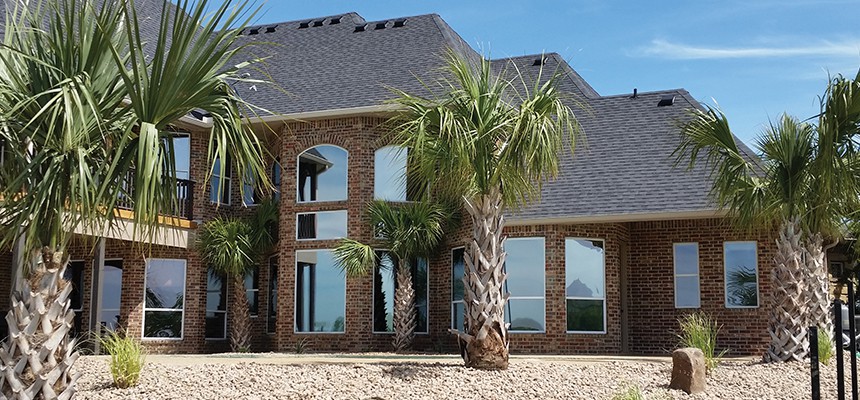How Residential Home Window Tinting Improves Your Home's Energy Efficiency
Residential window tinting provides an engaging solution for house owners seeking to improve power effectiveness within their living areas. By applying specialized films to windows, it properly reduces warm transfer, consequently maintaining interior temperature levels and reducing the requirement for extreme heating or cooling.
Comprehending Home Window Tinting
Recognizing home window tinting is crucial for homeowners seeking to enhance both comfort and power performance in their living spaces. Residential Window Tint. Window tinting entails the application of a slim movie to the inside or outside surface area of glass windows. This film can considerably modulate the amount of sunlight and warmth that gets in a home, hence affecting indoor climate conditions
There are various kinds of window tinting movies offered, each with distinct properties. The performance of window tinting is often gauged by its Visible Light Transmission (VLT) percent, which indicates just how much light can pass with the film.
Benefits of Power Efficiency
Home window tinting not only boosts appearances however additionally plays a considerable role in enhancing power effectiveness within residential areas. By reducing warm transfer via windows, colored movies produce an extra stable interior environment, which can result in substantial reductions in power consumption for heating & cooling. This energy effectiveness converts into lower energy bills, offering home owners with substantial long-lasting savings.

Additionally, home window tinting improves the comfort of living rooms. By lessening glare and obstructing dangerous UV rays, tinted home windows produce a more positive atmosphere, which can lead to boosted wellness for occupants. The defense against UV rays additionally assists preserve furnishings and flooring from fading, adding to the longevity of house products.
Just How Tinting Works
Tinting films operate through a mix of advanced products and technologies made to control the quantity of solar power getting in a home. Mainly made up of polyester, these films usually integrate ceramic or metallic bits that reflect and take in warm. This twin ability permits them to significantly minimize the penetration of ultraviolet (UV) rays and infrared radiation while permitting noticeable light to pass through.
The efficiency of home window tinting is measured by its solar warm gain coefficient (SHGC), which suggests just how much solar power is transferred via the window. Lower SHGC worths are better as they denote higher warmth rejection. Furthermore, window tints can feature a selection of tones, allowing property owners to tailor their visual choices while enhancing energy effectiveness.
Moreover, these movies act as a barrier, stopping warm loss throughout cooler months by mirroring interior warmth back into the living space. why not look here This thermal insulation impact matches the air conditioning advantages gotten throughout warmer months, adding to a well balanced interior environment year-round. By taking care of solar power properly, residential window tinting not only enhances convenience yet additionally plays a vital role in reducing power intake and decreasing energy costs.
Selecting the Right Tint

There are various kinds of home window films readily available, including dyed, metalized, and ceramic. Colored movies are cost-effective however might have limited toughness. Metalized movies provide much better warmth rejection however can disrupt digital signals. Ceramic movies offer exceptional warmth control without compromising exposure and are very long lasting, making them a preferred choice.
Visible light transmission (VLT) is one more vital variable, as it shows the quantity of all-natural light that can travel through the colored glass. Home owners should select a color with a VLT that complements their lights choices while still giving ample glow decrease.
In addition, analyzing the solar warmth gain coefficient (SHGC) can assist figure out exactly how well a tint can block heat from sunshine. A reduced SHGC shows much better warm control, eventually enhancing energy performance.
Setup and Upkeep Tips
Appropriate installment and upkeep are essential parts in making best use of the advantages of domestic home window tinting. To accomplish optimal outcomes, it is a good idea to hire a certified expert for installment. This makes sure that the tint is used properly, staying clear of air bubbles, wrinkles, or imbalance that might compromise efficiency. Professionals additionally use specialized devices and techniques, which can boost the sturdiness and effectiveness of the tint.
Adhering to installation, maintenance is necessary to prolong the life of the window movie. It is recommended his explanation to wait a minimum of thirty day before cleaning up the colored home windows to allow the adhesive to treat totally. When cleansing, use a soft fabric and a gentle, ammonia-free cleaner to stay clear of harming the film. Avoid rough products that might damage the surface area.
In addition, normal examinations are beneficial. Look for any peeling or bubbling, which could indicate improper setup or put on over time - Residential Window Tint. Addressing these concerns promptly my link can avoid further damage and maintain energy performance. By sticking to these installment and upkeep ideas, home owners can guarantee their window tinting remains to supply considerable energy cost savings and comfort for years ahead.
Final Thought
In conclusion, property home window tinting serves as a reliable solution for improving power efficiency within homes. By minimizing heat transfer and blocking unsafe UV rays, window movies add to lower energy intake and improved indoor convenience.
Home window tinting involves the application of a thin film to the interior or exterior surface of glass home windows. By decreasing warm transfer through home windows, colored films create a much more stable interior climate, which can lead to significant reductions in power intake for home heating and cooling.The efficiency of window tinting is determined by its solar warmth gain coefficient (SHGC), which shows how much solar energy is transferred with the home window. By taking care of solar power effectively, domestic window tinting not only improves comfort however likewise plays an essential duty in lowering power intake and lowering energy costs.
By reducing warm transfer and obstructing unsafe UV rays, home window movies add to reduce power usage and enhanced indoor comfort.